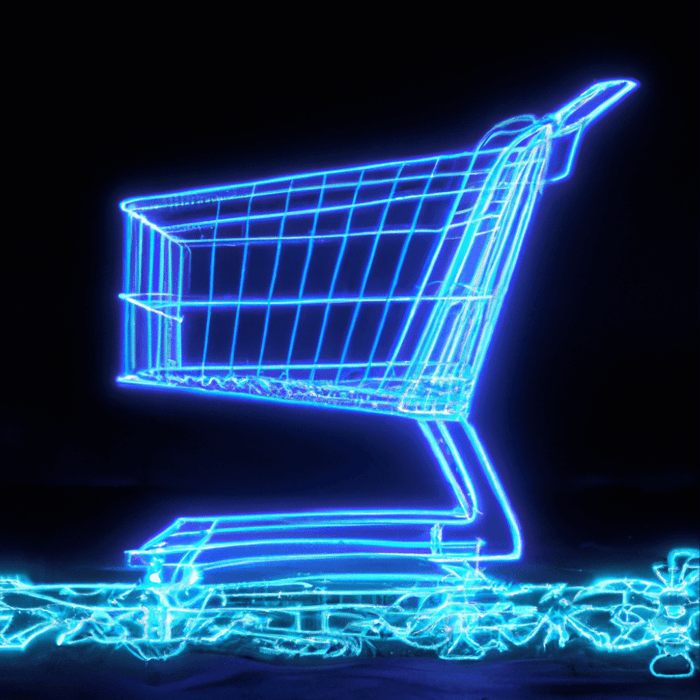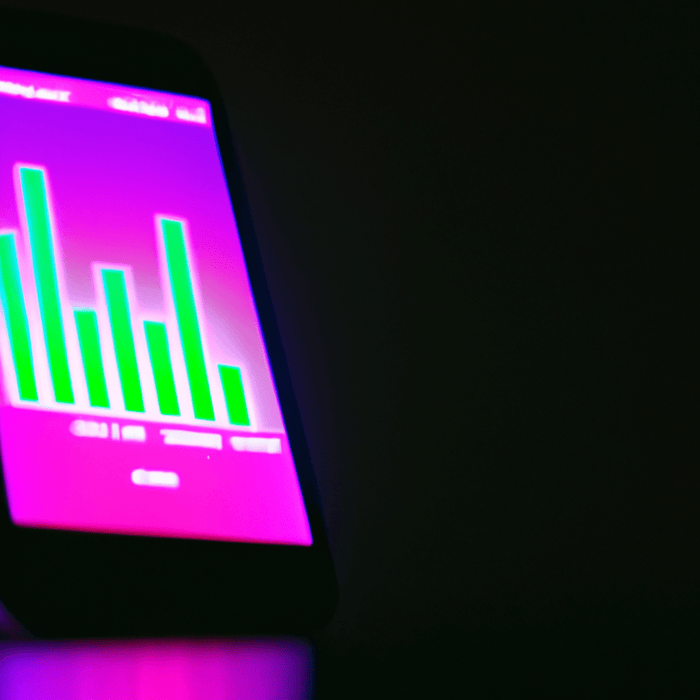The outbreak of COVID-19 has been challenging for all businesses regardless of size or vertical and will likely have a significant lasting economic impact; the extent of which we won’t know for years to come.
Businesses are hyper-focused on cash flow at the moment (and rightly so), which means that certain costs, such as marketing, are being cut in order to protect the business.
However, if possible, continuing to advertise should be a priority for retailers and there are a number of reasons why it makes sense to serve ads, 5 of which I’ve included below.
1. Amazon Haven’t Appeared in a Shopping Auction Since March 14th
For the last several years Amazon have continued to increase their presence in Shopping auctions and at times are seen to be showing in 80%+ of all possible searches, making them one of the most aggressive advertisers within the Google Shopping platform.

Amazon haven't appeared in a Google Shopping auction for over 2 weeks.
However, they haven’t appeared in a Shopping auction since March 14th, allowing other retailers to compete for clicks which would more than likely have gone to the retail giant.
2. Whilst Amazon Are Out, The Volume of Advertisers Has Remained Fairly Stable
Despite Amazon not advertising, auctions remain as active as ever and in some cases have actually seen an increase in the volume of advertisers appearing on a day-to-day basis.

There's been an increase in daily advertisers in auctions in the last week or so.
In the above, we’ve outlined the volume of advertisers showing Shopping ads in the last 30 days.
Given we know that Amazon haven’t been present, there hasn’t been a mass exodus of advertisers with the majority of other retailers continuing to compete for clicks.
Google Shopping is a high-intent marketing channel with users continuing to actively search for and purchase products online, even if search volume has decreased – more on that below.
3. Search Volume May be Down, But High Demand Still Exists
In the below graph, we’ve compared daily impression volume across various verticals for the last 30 days or so.

Some verticals have seen increases in search volume, whilst other have seen dips.
Whilst some verticals have seen search volume dip from peak, in others demand has significantly increased (Retailer 1 for example).
With the latest reported numbers indicating that 25% of the world’s population are under lock down, consumers are likely to be less willing to make a purchase if they are unable to use a product until the lock down measures are lifted, and so demand (search volume) is likely to be lower. As Lord Wolfson, the chief executive of Next, recently said “people do not buy a new outfit to stay at home". Whilst this is undoubtedly true, demand still exists and advertisers need to appear in auctions, or risk giving up the sale to their competition who continue to advertise. Google Shopping provides advertisers a way to get relevant traffic to their site to an audience who are self qualified/in-market (they’ve searched for the product), so being present in these search results should be seen as a priority.
Whilst some product categories will see a decrease in demand, other verticals could see sizeable increases in demand over the next few weeks.

Games consoles have seen an increase in demand with kids & adults alike practising social distancing.
An example of this could be games consoles, such as the PlayStation 4, which has seen a spike in search volume in the last few weeks coinciding with the increased social distancing/lock down measures worldwide.
Another example of a sector which could see a boost is home and garden, as consumers in lock down will likely want to make their self-isolation as comfortable as possible. With a visit to your favourite restaurant or bar out of the question, consumers will have more time on their hands and it may be the perfect time for some home/garden improvements which they have been neglecting.

With increased time at home, DIY projects around the home & garden have become popular.
Furthermore, some users may have a higher-than-normal retail purchasing power as income won’t be spent on eating out, drinks, visits to the cinema, gyms or larger purchases such as holidays. Whilst some of the income will likely be saved, consumers will spend some proportion of their income on home entertainment activities such as jigsaws or virtual tools, both of which have seen large increases in search volume in the last couple of weeks.

Searches for 'jigsaws' have seen a 5 year peak, coming outside of their usual peak around Christmas.
Searches for ‘jigsaws’ saw a huge increase in searches with its 5 year peak coming in the last 7 days. Similarly, with users not being able to travel to holiday destinations, searches for ‘virtual tour’ have increased significantly too. (See below)

With airlines grounding their fleets, travel experiences have moved online.
4. Google Have Announced a $340M Ad Credit Care Package for SMEs
At the end of last week Google announced that as part of a combined $800M package to combat COVID-19 it was pledging $340M in free ad credit for SMEs, providing invaluable assistance to businesses during what is likely the most challenging period of trading they have collectively faced.
The ad credit could provide a much needed injection into spend levels to allow businesses to continue to advertise and reach consumers looking for their product or service.
So far, the only eligibility requirement is that the business needs to have been actively advertising on Google Ads since January 2019, though there may be additional requirements set out in the coming days. Advertisers who are eligible should be notified via their Google Ads account.
Whilst the $340M commitment from Google is sure to assist some businesses, it remains to be seen how many businesses it can help in addition to the level of ad credit each business will have available. As of 2019, there were 5.9M SMEs in the UK alone, and whilst only a small volume of these will be advertising on Google Ads (and from January 2019), if you are to consider the volume of SMEs across the world who do advertise on Google, the ad credit per advertiser is fairly low.
Take for example a pool of 400,000 SMEs worldwide who are eligible for the ad credit. That pot of $340M evenly distributed would give a sum of $850 per business. Below is a breakdown of what an evenly distributed pot would mean for businesses based on a varying volume of advertisers:

Google haven't yet announced how many SMEs it will be able to support with free ad credit.
We’re currently awaiting official guidance from Google on what the ad credit will be per advertiser; we’ll update this blog once we know more.
5. Brands Continuing to Advertise During Slowdowns See Increased Sales & Market Share During & After The Recession
According to this Forbes article, during the 2008 recession, ad spending in the US dropped by 13%, with online seeing a smaller drop (2%) compared to traditional formats such as newspapers (27%) and radio (22%). However, those who continued to advertise reaped the benefits during & after the recession. As it notes, there are several reasons to advertise during a “slowdown”, such as:
The Noise Level Can Decrease as Competitors Pull Back on Ad Spend
- With more choice, consumers will block out the noise and often stick to what they know; a lot of the time in B2C ecommerce that means Amazon.
- With Amazon not present, advertisers should take advantage of their absence and generate additional sales.
The Cost of Advertising Drops During Slowdowns
- As competitors pull back or suspend advertising, it becomes more cost-effective to advertise at similar levels.
- Paid search continues to be auction based and, with less brands competing for clicks, it can be extremely cost-effective to continue advertising.
When Marketers Cut Spend, Their Brands Lose Their “Share of Mind”
- When not present in consumers minds, brands can quickly lose their market share.
- A great example the article cites is that during the 1920s, the market leader of dry cereal was Post.
- However, during the Great Depression, they significantly cut back their advertising budget.
- Simultaneously, one of the competitors, Kellogg’s, doubled its spend and grew profits by 30% becoming the market leader; a position it retained for years to come.
Brands Can Project Stability During Unstable Times
- Whilst these times are unprecedented in the modern era, brands who do continue to advertise look strong to the market, whilst others who suspend or pullback can see their market shares decrease during and following market slowdowns.
- Take for example this ad from Allstate which tackled the 2008 recession head on by reassuring consumers that better times are coming, having themselves been founded in 1931, around 18 months after the 1929 crash.
- Whilst Allstate’s stock took a hit in 2008 (as most companies did), earlier this year their stock was trading at $125 a share (around 5x what it was following its dip during the 2008 financial crisis) and has continued rebounding well despite dropping due to COVID-19.
Whilst it is understandable that some businesses will unavoidably suspend advertising, there is data ranging from the last couple of weeks to the last 100 years of business to suggest that if a business is still operating, it is advantageous to continue or even increase the levels of media spend which are being committed to advertising.





